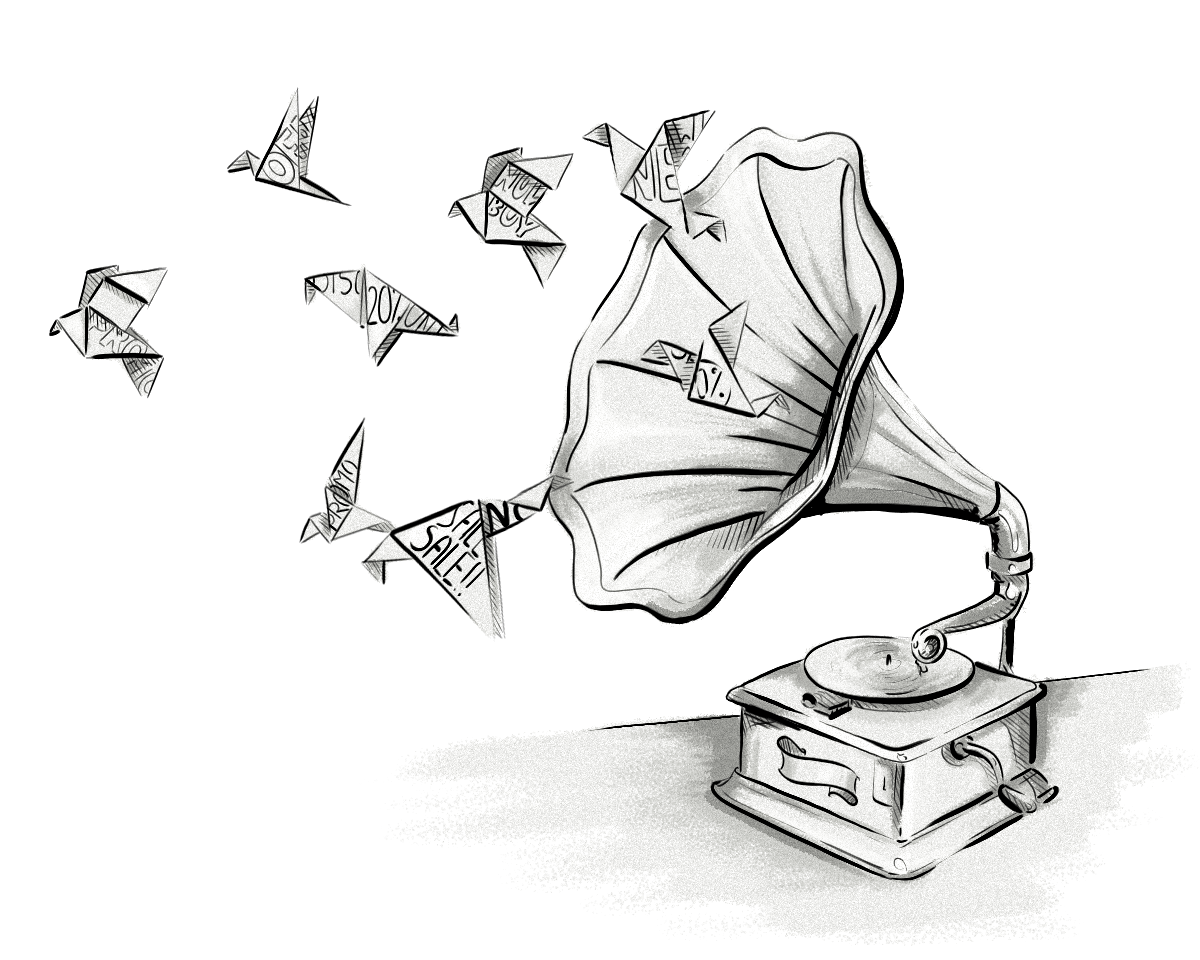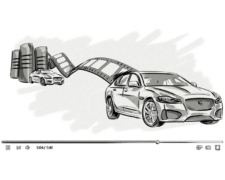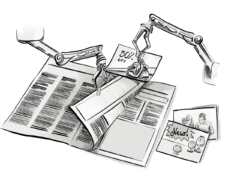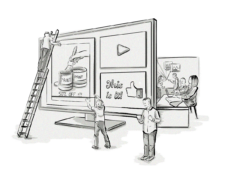In 1993, an innocuous, simple banner was displayed on Wired.com, teasing unsuspecting visitors to click on it. These were the meager beginnings of display advertising, and programmatic quickly arose to automate the growing demand for this emerging ad-delivery process.
There was no turning back from there; the novel way of buying media and managing online inventory took the industry by storm and was quickly adopted by publishers and advertisers. Today, programmatic is an expected and accepted way of buying digital media: online display ads, video ads, search ads, social media ads, advanced TV and outdoor ads.
However, recent developments in programmatic suggest that the needle is slowly moving and programmatic audio ads may soon gain more traction.
The Rise of Programmatic Audio
A number of big players are either looking at or already implementing programmatic audio. With announcements from Spotify, SoundCloud, Tune In, Pandora and Google leading the charge, a big change may be around the corner.
The interest seems to stem from other ongoing changes in the advertising industry, like the constant optimization of advertising processes, the decline of non-digital media and conversion to their digital counterparts (streaming TV and music services and digital radio). The advertising industry closely follows where audiences are, and there are more and more people using podcast and music-streaming services today than ever before.
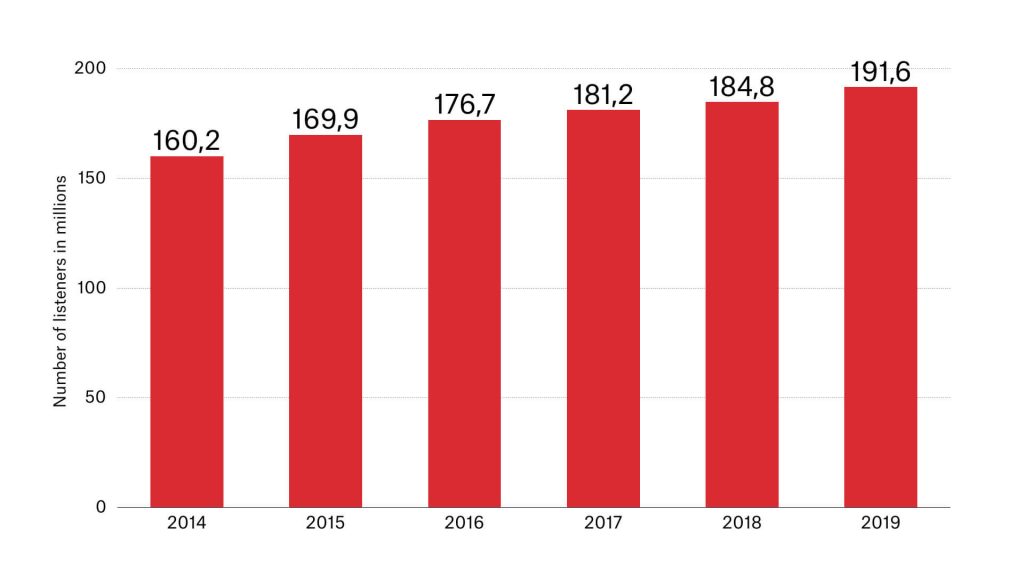
What Is Programmatic Audio Advertising?
Programmatic is an umbrella term for all the processes allowing the purchase of impressions through automated systems, with limited human involvement and slow, manual-insertion orders. Programmatic has been the bread and butter of online advertising, and is making its way to new areas like radio and audio advertising, out-of-home (OOH) advertising, or even traditional print.
Programmatic audio is the use of technology to automate the selling and insertion of ads in audio content like podcasts, digital radio and music-streaming services.
Considering the success it’s had in the other areas of advertising, there is no doubt programmatic audio has huge potential. The only thing that has held it back for so many years is limited interest of publishers and lack of proper technology and standards to provide it.
There is a natural corollary: slumping interest in traditional TV motivated the transition to programmatic TV on OTT (over-the-top) devices. There is new technology which enables advertisers to return to pre-Internet days of out-of-home advertising with a digital twist, bringing with it better targeting, measurement and retargeting. Similar to TV and OOH, the decline in the popularity of traditional radio is advancing the adoption of online and digital-radio broadcasting.
AdTech & Programmatic Platform Development
We can help you design and build real-time bidding, and programmatic advertising platforms for all advertising channels — display and native, in-app mobile, video and audio, OTT and CTV, in-game and DOOH.
How Does Programmatic Audio Advertising Work?
Unlike the case of display in video, programmatic audio was, for many years, missing solid specs and delivery standards – so much needed to attract more advertisers and publishers and pump advertisers’ dollars into the system. Finally, the IAB, the popular digital-advertising association, has been working on an actual template for delivering audio ads and proposed its Digital Audio Ad Serving Template (DAAST) in 2014.
In November 2018, the support for audio ads with DAAST merged into VAST 4.1, a popular IAB standard for video ad buys. We covered VAST and other video ad-serving protocols in a previous post. In the new version of VAST, among the other changes, the “Ad” element now has the “adType” attribute, allowing the ad to be of audio-only type. Also, the term “media player” is used in the document instead of the term “video player” which was used previously. There are additional instructions as well for handling various VAST elements/attributes in the Audio Ad scenario.
Quicker adoption of frameworks like VAST (and the deprecated DAAST) is important from a business perspective because it prompts the popularity of programmatic audio in the industry and enables ad servers to communicate with publishers in a commonly understood language for ad delivery.
VAST, among other things, envisions a framework for placing linear ads (i.e. audio ads that appear before, after, or during a break in the main audio content) in audio players. This can be complemented by ad formats like:
- Companion ads: accompanying ads, e.g. banners with the brand’s logo and a CTA, displayed in the audio player while the audio ad is playing.
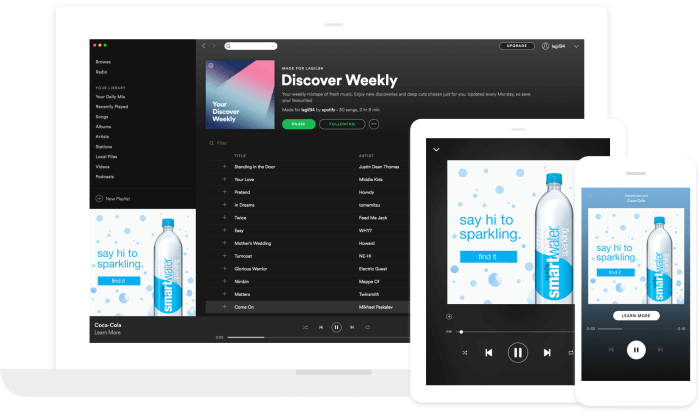
- Ad pods: “slots” for one or more audio ads in the content.
- Skippable ads: Ads in audio can appear as pre-roll (before the content) and mid-roll (in-content), each offering specific advantages.

Which Companies Are Offering Programmatic Audio Ads?
Google announced in June 2018 that it would start offering programmatic audio ads through Spotify, SoundCloud, Tune In and Google Play Music, enabling brands to buy the ads using their DoubleClick Bid Manager.
Rubicon Project also sees potential in programmatic audio. The AdTech provider made substantial investment in programmatic audio in 2018. As media buyers gain confidence and better understand programmatic audio measurement and tracking, this medium will become a standard.
SoundCloud recently announced that it’s adding programmatic audio and video inventory via AppNexus’s marketplace.
Pandora, a leading provider of music and podcasts, recently launched its private audio marketplace to buyers looking to purchase ads programmatically.
BBC, the British broadcasting pioneer, partnered with the podcast provider Acast to launch industry-first programmatic audio ads. Because BBC is a public broadcaster in the UK, the ads are only displayed to international listeners of the podcasts.
Also, since BBC journalists can’t endorse brands and read the ads using their own voice, programmatic insertion of pre-recorded ads was a logical step for the station.
For example, Acast can automatically recognize if a listener is located in the UK and ensure ad-free delivery. For listeners outside of the UK, Acast dynamically inserts ads based on their location, device type, context and time of day layered with third-party demographic data.
Benefits of Programmatic Audio Advertising
The full potential of programmatic audio has yet to be unlocked, but the numerous advantages of advertising programmatically in podcasts and music-streaming services are already evident – they result from the specificity of the audio medium itself (i.e. radio, podcast or music).
1. The growing popularity of music-streaming services
Independent research shows that a growing number of users use Spotify and other similar music-streaming services. While the premium plans allow users to enjoy ad-free music streaming, some people opt for the cheaper alternative that includes ads.
Spotify boasts a whopping 100m users worldwide, out of which 83m are paying subscribers and about 17m are non-paying subscribers who use the non-premium service and listen to ads.
Even if the figures are not as impressive as for display ads, audio advertising should be considered a more premium kind of advertising. Advertisers don’t have to compete for the user’s attention, as the the listeners aren’t physically able to listen (or watch) to anything else while an audio ad rolls – which makes the engagement much higher.
2. Mobile is the main driver of the programmatic-audio revolution
75.8% of U.S. digital audio listening occurs on mobile, and only 24.2% on desktop. In the UK, 38% of audio listening is on devices other than radios – primarily PCs and laptops, which make up 11% of all audio, and smartphones, which make up 8%
It is estimated that users of mobile devices spend 25% of the time listening to music, podcasts and other audio, and because people are increasingly consuming media across devices and apps which require users to log in, we are talking about people-based marketing and lesser reliance on cookies – so important with regard to the GDPR.
Programmatic audio offers the best of both worlds, allowing advertisers to reach their target audience seamlessly across devices with Spotify’s unique people-based insights as well as traditional device data.
3. Intimate brand-listener bond
With a majority of people listening to audio via headphones (70–90% in some cases), an intimate bond is formed between the brand and listener. This not only helps advertisers ensure that their message is heard, but also provides an opportunity to personalize the message to that individual listener.
Results from a personalized-audio ad campaign conducted by A Million Ads found that listeners exposed to a personalized ad were 2.4x more likely to convert than listeners who heard a generic ad.
4. Affluent, well-educated audience
Podcast listeners statistically are more likely to have a college or higher education along with a $100k+ household income. This makes them a very valuable audience from a targeting perspective.
5. Audio Ads Are Distraction-free
Podcasts are considered a distraction-free medium, as they can reach people in situations when no other media can. Because of the specificity of content, listeners are more focused than display-ad audiences and tend to consume podcasts in distraction-free environments – at home or during leisure.
6. Resistance to adblock
People listening to audio on mobile devices can’t simply block ads like they can with display ads via ad-blocking tools. This presents an undeniable advantage to advertisers. Unlike in web browsers, users cannot jump to another tab or install an adblocker to get rid of ads altogether.
Early Challenges of Programmatic Audio Advertising
Until recently, programmatic audio was dealing with the initial growing pains. Most of these problems have already been addressed, but others will go away when the technology matures.
Undersupply and under-demand
Most crippling for the development of programmatic audio is the lack of scale, which is critical to attract advertisers and publishers. At the moment, supply of programmatic audio media is much bigger than the demand for it, leading to underselling and underpricing of inventory.
Again, this is another reason why real-time bidding (RTB) auctions are difficult to execute in programmatic audio advertising. For now, a guaranteed (non-programmatic or programmatic direct) approach makes more sense here until demand grows to match supply.
Incompatible technology
The existing technology driving digital ad-buying is not quite compatible with audio. While there are frameworks concerning the delivery of programmatic audio, this does not solve all its pains. The existing ad servers and ad exchanges are designed with display and video ads in mind, and so is the nomenclature. Case in point: ad view, viewability, impressions, cost per click – all these terms mean very little in the way of audio ads.
This means that getting fully on board with audio advertising entails heavy investing in the technology. Streaming platforms have to build a lot of the costly advertising technology themselves, which for many players may not offer a sufficient return on investment.
The Future of Programmatic Audio
Because audio content like podcasts is exponentially gaining in popularity, confidence in the medium is growing. This is supported by a recent study by the IAB and PriceWaterhouseCoopers, reporting that the revenues from programmatic audio ads in podcasts exceeded $220 million in 2017, making an eye-watering 85% increase over the 2016 figures.
The always-connected, on-the-go lifestyle and the popularity of fitness is conducive to consuming audio, especially on mobile devices. Unlocking the full potential of programmatic audio ads may not happen overnight, but the opportunities it holds should not be overlooked.
AdTech & Programmatic Platform Development
We can help you design and build real-time bidding, and programmatic advertising platforms for all advertising channels — display and native, in-app mobile, video and audio, OTT and CTV, in-game and DOOH.
